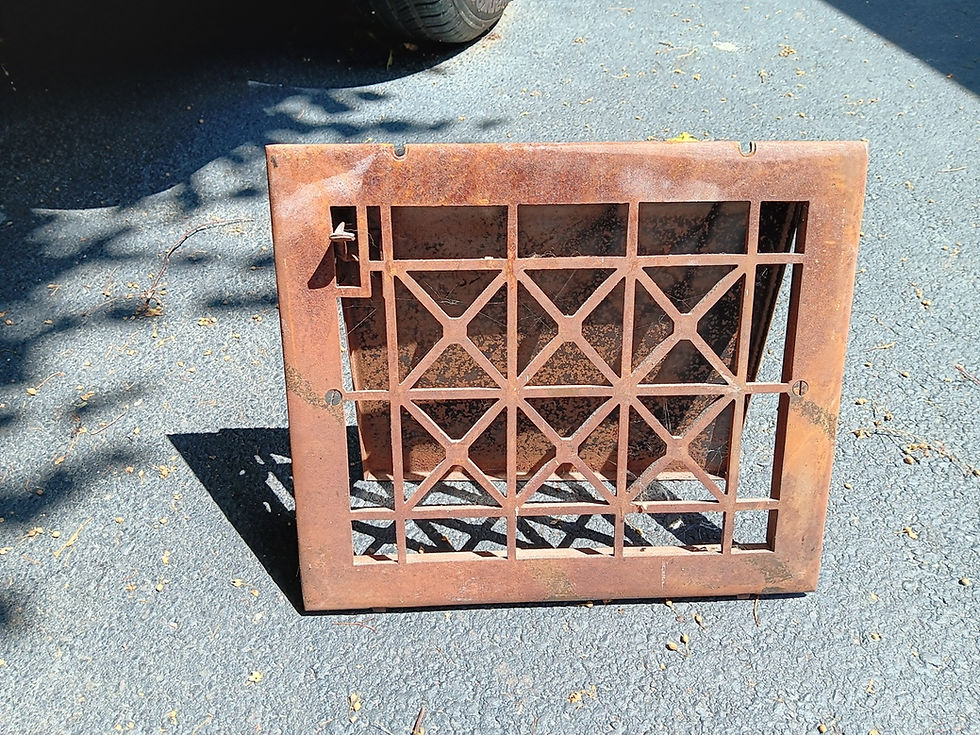Ideas from Ed: The hanging of the mantle (Volume 6, Issue 1)
- edwardpetrus

- Jan 1, 2023
- 3 min read
I love the way that title sounds like a murder mystery novel! In reality, though, I’m hoping to show the pretty cool way I installed a fireplace mantle where one had been stolen from the house I was restoring. The downside is that although I have pictures of the “before” and “after” situations, I will need to resort to drawings to show you how it was done, and how you can adapt this idea to hang a mantle or other items on a wall.
Here’s a shot of the missing mantle. (May the scoundrels that stole the original mantle rot in eternal fire!)

The first step, of course, was to measure the area carefully and then search for a mantle that had the appropriate dimensions and appearance that suited the house. Luckily for me, there are several stores within driving distance that specialize in architectural salvage, and I found this mantle in one in Pittsburgh, PA. Here it is simply positioned in place to make sure it was satisfactory. I had to make minor adjustments at the opening so it would fit well against the green tiles:

I’m one of those people that likes the look of wood – not the look of painted wood – so I began the process of stripping the paint from it:

After a bit of stain, the mantle was looking like I hoped it would:

Now comes the real focus of this month’s article, that of how I actually installed it. After studying the backside of the mantle, I found an area that would lend itself to a long “cleat” that could be attached. I made sure that location was available “on the wall” as well. The thickness of the cleat had to be the depth from its position on the back of the mantle to where the wall would be if the mantle was flush against it. In my case, that cleat ended up being about 40” long and one-and-one eighth inches thick. I found a straight length of 2x4 material, planed it to that thickness, and cut it to length. I then ripped it diagonally on the table saw, like this:


I attached the cut pieces temporarily back together with 2 screws, and “permanently” attached just one of the pieces (making sure it was the one with the cut edge DOWN) to the back of the mantle. I drove 2 small nails partially into the lower piece, then snipped their heads off to make a sharp point of sorts.
I then placed the mantle near the wall, located it center-to-center on the fireplace, and pushed it firmly against the wall. The 2 protruding nails left small dimples where they made contact. Thus, after pulling the mantle back away, I unscrewed the lower half of that cleat from the upper half and attached it to the wall using those dimples as locators. Of course, the actual attachment needed to be substantial, using bolts/anchors so the cleat was held very firmly in place.
I lowered the mantle (with the attached upper cleat half) onto the cleat section on the wall, and because the cleat was cut diagonally, the weight of the mantle pulled it tightly to the wall. No other attachment points were used or needed! If I must ever remove the mantle for some reason, it will simply lift right back off of that cleat without any tools. I think that’s pretty awesome!

Here’s a picture of the mantle as installed, after completing repairs to the fireplace tiles and installing gas logs, but before installing a nice hearth:

You may remember my article on the hearth installation if you’ve followed my “Ideas from Ed” articles. The full article is here: https://www.lcppreserve.org/post/ideas-from-ed-not-afraid-of-a-little-hearth-work
I’ll post one picture of the hearth so you’ll see how everything turned out:

I hope all your projects go well. Thanks for reading, and happy restoring!
Ed
If you’d like to download a PDF of this “Ideas” column, click here:




Comments